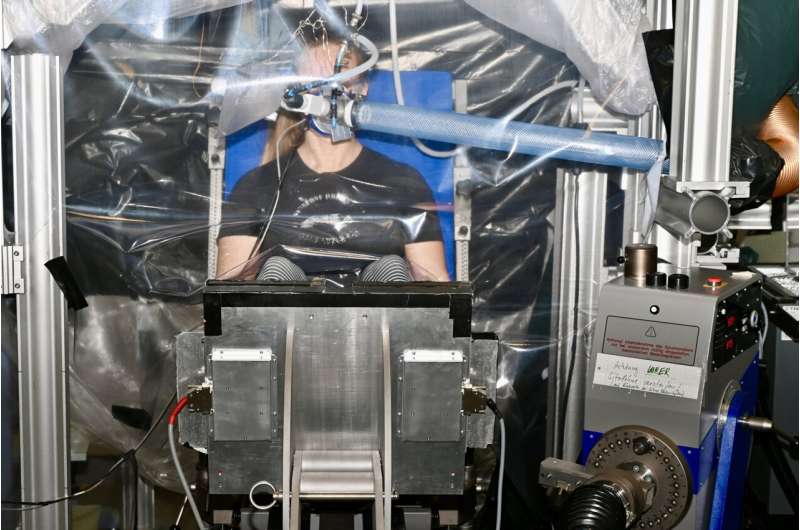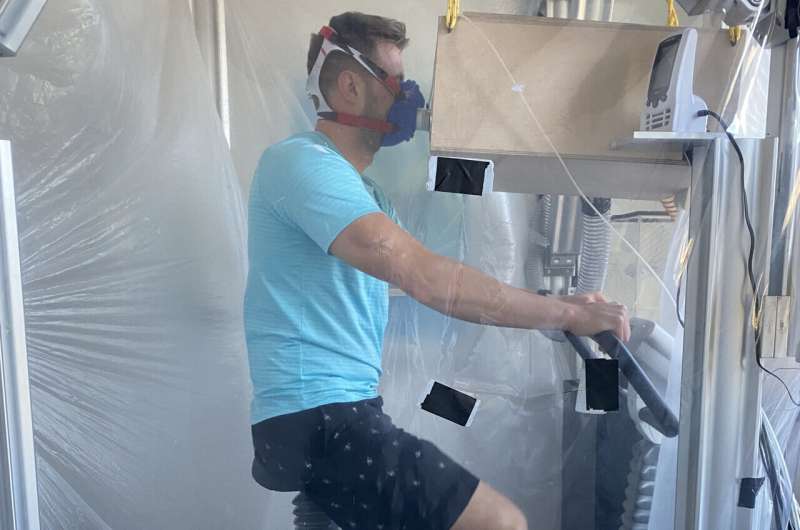A study participant in a clean air space. Credit: Henning Wackerhage
A team of biology researchers from Universität der Bundeswehr, Technische Universität München and the University of Cassino and Southern Lazio, has found that people exhale more aerosols when engaging in endurance exercise than they do when engaging in resistance exercise. The study is published in the Proceedings of the National Academy of Sciences.
As the global pandemic has progressed, scientists across the globe have studied various aspects of the SARS-CoV-2 virus spread. One such area of study has been comparison of types of activities that are more or less conducive to transmission of the virus.
In this new study, the researchers looked at exercise options and their related risk. Going to gyms to exercise is a popular way to keep in shape. But doing so can put people at risk from both airborne and surface viral and bacterial infections.
In response, gym owners have taken to better cleaning equipment to kill surface germs. More difficult to control are airborne viruses suspended in tiny droplets of fluid that make their way into the air via exhaled aerosols. In this new effort, the researchers wondered which sorts of exercise might present more of a risk, endurance or resistance exercise.
Endurance exercises are those that are generally continuous over an extended period, such as running or participating in a spin class. Resistance exercises are generally shorter and repetitive, such as lifting weights. To find out which type of exercise puts people more at risk of infection from airborne viruses, the group recruited 24 volunteers and asked them to engage in exercise activities to measure aerosol levels released into the air as they labored.
A study participant in a clean air space. Credit: Katharina Knödlseder
The volunteers were separated into three groups: One did a simple resistance exercise, another engaged in a more difficult three-set resistance workout, and the third participated in a spin class.
Each volunteer wore a breathing mask during exercise to capture air flow amounts, rates and aerosol numbers. The researchers found that those in the spin class were exhaling nearly five times as many aerosol particles as those engaging in resistance exercises. Using that information, they calculated that a person working out in the same room as an infected person was six times more likely to be infected in a spin class than they were if they joined a group doing resistance training.
More information: Benedikt Schumm et al, Respiratory aerosol particle emission and simulated infection risk is greater during indoor endurance than resistance exercise, Proceedings of the National Academy of Sciences (2023). DOI: 10.1073/pnas.2220882120
Journal information: Proceedings of the National Academy of Sciences
© 2023 Science X Network

























